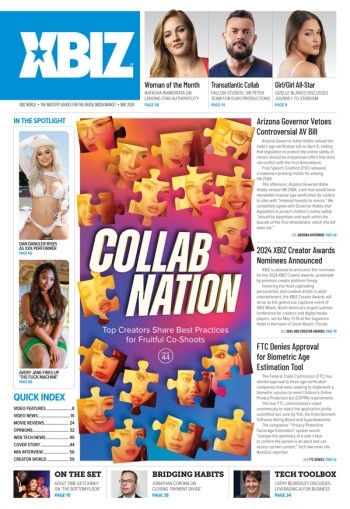There are four primary ways people come into business ownership, and they all have different failure rates: starting a new business, franchising, inheriting a family business and acquiring. If you are looking for a new venture, you may want to select one based on your amount of capital and risk tolerance.
Starting your own business is where you’ll find the most significant upside, but failing can be expensive in terms of time, money and your health. There are dozens of reasons a startup can fail, but a lot of the risk comes from the fact that it is hard to build a company and that there are challenges that have nothing to do with the product or service you may be providing. Your desired service offerings are only part of launching a business. How much money you have to get started determines which business ownership options are available to you.
Your desired service offerings are only part of launching a business. How much money you have to get started makes an enormous difference in which [business ownership] options are available to you.
STARTUP COSTS
The average startup cost is $100,000. However, there are thousands of stories of people getting started with much less. I recently met with a multi-million-dollar distribution company in Los Angeles that was started with just $4,000 and is now seeking mergers and acquisitions as it grows and expands. Website publishers and affiliate marketers often get started with just their time and no cash at all. My first website cost me nothing to start, though it also didn’t make much money — but I turned my first website acquisition, for $300, into a business profiting six figures a year.
The data speaks for itself when it comes to new business startups. The U.S. Bureau of Labor Statistics shows that the failure rate for new startup businesses is 20% after their second year, and nearly 50% close up shop in five years. The failure rate for businesses over 20 years old is over 80%. The post-COVID numbers are much worse.
CONSIDERING A FRANCHISE
Due to the above factors, one of the ways to reduce your risk is to buy and operate a franchise, but it will cost you. The initial capital investment for a mainstream franchise is around $500,000. That is five times higher than traditional startups.
The International Franchise Association releases impressive figures, boasting a business survival rate of 92% after five years, but the accuracy of those numbers is heavily debated due to how the organization collects its metrics. Critics point to study data showing that failure rates are much higher — 62% after four years and after 10 years, 50% of franchisee systems fail. Something else to consider is that franchises are typically less profitable; their primary structure is designed to ensure that they make the franchisor richer.
The only franchising model available to adult is affiliate marketing and white labels, which are widely available. They are incredibly affordable with ultra-low barriers to entry. You can launch a webcam brand for the cost of a domain. You can white-label nutra to establish a dick pill empire. There are thousands of products you can sell; you just need traffic. If you fail, moving on to something else is easy and affordable. However, similar to the franchise model, the product owner is the one who is getting richer.
The most significant upside of a franchise or affiliate program is that they already have products, credit card processing, systems, processes and marketing ready to go. While working for an established brand increases the chances of your success, success or failure still depends heavily on the ability of the operator. But, if you’re an entrepreneurial type, the biggest downside to a franchise or affiliate program is the lack of ability to innovate due to the rigid limitations of selling someone else’s product or service. You are essentially an employee building someone else’s brand rather than your own. Perhaps you’ll be energized by your easily achieved success, or you’ll be miserable like Saul Goodman working at Cinnabon in “Better Call Saul.”
RUNNING A FAMILY BUSINESS
Inheriting a family business is common, especially among an aging population, and since the average age of business owners is between 50 and 60, many more such transitions are likely in the coming decades. Parents always want to leave their business to their children. However, children often do not want to follow in their parents’ footsteps. Often they lack the passion for continuing the business, have other interests or do not have the skills to succeed. For this reason, family businesses fail 60% of the time after being handed down. If you think that sounds bad, third-generation businesses fail over 90% of the time.
EXPLORING ACQUISITIONS
The most powerful advantage of acquiring a business rather than starting one from scratch is bypassing the risk of the early years of a business lifecycle, when failure is most likely. Acquisition is less risky, and often faster and cheaper. Companies that are formed, established and profitable have made it over hurdles and you can buy all that time and struggle, blood, sweat and tears, for pennies on the dollar.
Most acquirers see things in a business that they can improve and change, or untapped potential. They are innovators who can afford to pay multiples on profit because they believe the business can be enhanced. Established companies have a known brand and reputation, which transfers instantly and can be leveraged to your advantage. A buyer can utilize the existing team of employees and contractors, or change existing processes and procedures to be more effective. You can also tap into current business partners and vendors, which can often benefit an existing business, if you have one. None of this is available when you start from scratch.
By acquiring a functional business, you’ll be able to start recouping your acquisition cost immediately because it has cash flow. And if you incorporate seller financing into the deal, you are effectively using the cheapest and lowest risk money available, whereas if you start a business from scratch, it could require years before profit-taking is possible.
If you’re new to a market, buying one allows you to reap the rewards of knowledge transfer from the previous owner. Training is included in almost every acquisition from the owner or founder. They can even tell you about things they tried that didn’t work and growth opportunities they haven’t sought. This saves you from making potentially big mistakes later on.
Regardless of what path you take, it’s vital to be aware of the pros and cons of taking on a new business venture, so you can go in with eyes wide open.
Juicy Jay is the CEO and founder of the JuicyAds advertising network. He is also the founder of Broker.xxx where he operates an adult industry marketplace as “The Dealmaker,” helping people buy and sell adult websites and businesses.






